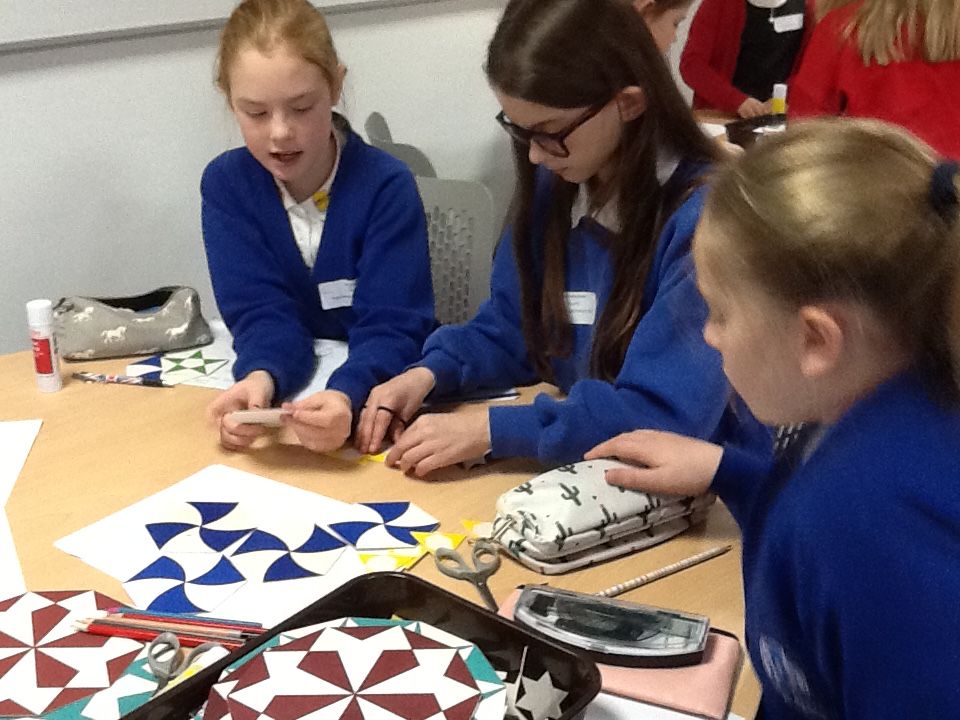Mathematics
Pilton Bluecoat ACADEMY
Vision for Mathematics
'Without mathematics, there’s nothing you can do. Everything around you is mathematics. Everything around you is numbers.'
Shakuntala Devi, Indian writer and mental calculator
Mathematics is not a careful march down a well-cleared highway, but a journey into a strange wilderness, where the explorers often get lost. Rigor should be a signal to the historians that the maps have been made, and the real explorers have gone elsewhere.
W.S. Anglin, Mathematics author
Vision
We strive to enable fascination and excitement to discover mathematical concepts and to broaden children’s knowledge and understanding of how mathematics is used in the wider world.
Intent
At Pilton Bluecoat, we aim for the children to see themselves as mathematicians by developing a curiosity for and making rich connections between mathematical ideas. They do this through the development of the following areas (as outlined in the National Curriculum):
- fluency so that they can recall facts and concepts and apply their knowledge
- reasoning so that they can justify, prove, and provide an argument, conjecture or generalisation about a mathematical idea
- problem-solving by breaking a problem down into a series of smaller steps.
Implementation
Implementation
We follow the mastery approach to mathematics to guide all children towards a deep understanding of the maths they are learning. Each unit of study is given time for children to explore thoroughly and build on previous areas. White Rose planning resources are used to support teachers’ planning.
Lessons are designed through ‘chunks’ or small steps to ensure that they are able to build on and apply learned skills. Children’s reasoning is scaffolded through the use of talk frames and further developed through probing questioning (based on the Chinese proverb that ‘the answer is only the beginning’). Problem-solving is at the heart of the children’s maths learning, giving them the opportunity to apply the tools and skills they have learned. Misconceptions are used as part of the lesson design to promote reasoned discussion. Careful use of manipulatives and varied images help children to gain a deep understanding of mathematical concepts.
The majority of children will move through the learning at the same pace, with some being supported through additional resources (manipulatives and images) or guided by an adult, and some demonstrating conditional thinking through looking at the maths in a ‘different’ way through completion of a ‘Diving Deeper’ task. Those who are not sufficiently fluent have additional practice through ‘Top-up’ sessions to prevent gaps from widening or from pre-teaching. Children who are working well behind ARE are provided with more tailored teaching from a previous year’s curriculum.
Times tables facts are learnt through making connections between facts (using the Jill Mansergh counting stick approach) and are rehearsed through ‘Times Tables Rock Stars’. Maths skills are also practised outside of lessons through the use of ‘Mathletics’.
Impact
Assessment in maths is regular and ongoing. Teachers use this assessment to influence their planning and interventions, and ensure they are providing a mathematics curriculum that will allow each child to progress. Feedback is given to the children through self-marking and next step (E, M, D – Error, Mistake, Depth) tasks to ensure they are meeting the specific learning objective. Each term, children complete a summative assessment (Curriculum Maestro or previous SATs papers). The teaching of maths is also monitored through book scrutinies, learning walks and lesson observations. All assessments are then used to determine children’s progress and attainment; these indicate that standards in maths are approximately in line with national expectations.

